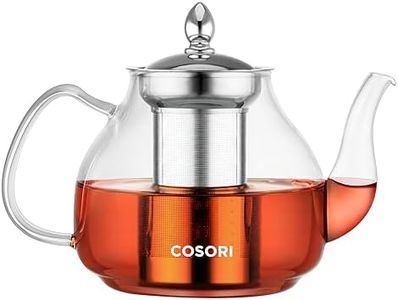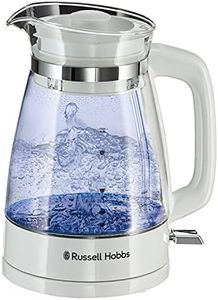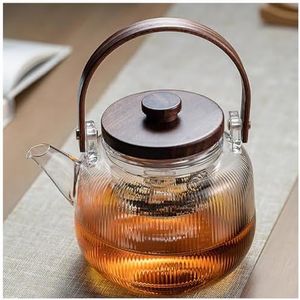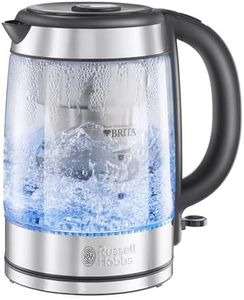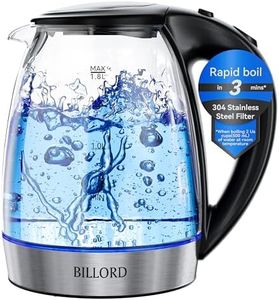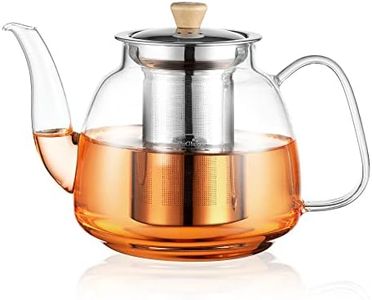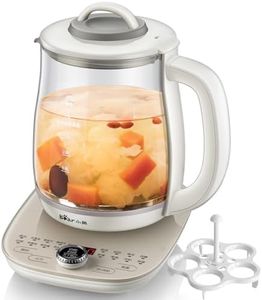We Use CookiesWe use cookies to enhance the security, performance,
functionality and for analytical and promotional activities. By continuing to browse this site you
are agreeing to our privacy policy
10 Best Glass Kettles
From leading brands and best sellers available on the web.Buying Guide for the Best Glass Kettles
Choosing a glass kettle is about more than just picking a kettle that looks good in your kitchen—it's about finding a model that fits your daily habits, is safe to use, and lasts a long time. Since you'll use your kettle often, consider what matters most to you: how quickly it boils, how easy it is to clean, and what safety features it offers. Understanding the main specifications can help you pick a glass kettle that suits your lifestyle and needs.CapacityCapacity refers to how much water the kettle can hold, usually measured in liters. This is important because it determines how much hot water you can make at one time. Small kettles (around 1 litre) are perfect for singles or couples who make just a cup or two at a time. Medium sizes (1.5 litres) work for small families, while larger options (1.7 litres or more) suit bigger households or people who frequently prepare drinks for guests. Think about how many cups of hot water you usually need—there’s no sense in getting a big kettle if you’re only making tea for yourself, and too small a size means making multiple batches.
Wattage (Power)Wattage refers to how much electricity the kettle uses and also impacts how fast it boils water. Higher wattage (like 2000W or more) means faster boiling, which is convenient if you are often in a hurry, while lower wattage (around 1200-1500W) is a bit slower but can be more energy-efficient. If speed is your top priority, opt for a higher-wattage kettle, but if you don’t mind waiting a bit longer and want to use less power, go for a lower wattage.
Material and Build QualityWhile the body is glass, some parts like the base, lid, and handle may be made of plastic or stainless steel. High-quality glass such as borosilicate is more resistant to thermal shock and less likely to crack. Pay attention to whether the glass is thick and sturdy—it should feel solid, not flimsy. Stainless steel accents often indicate a more durable build, while too much plastic might impact taste or durability. If safety and longevity matter to you, choose kettles with sturdy glass and minimal plastic for parts that touch water.
Filter TypeA filter is usually located at the spout to catch limescale and impurities as you pour. Some filters are removable and washable, which is more convenient for cleaning and maintaining water taste. If you live in an area with hard water, a good filter will help keep your drinks tasting fresh and your kettle running smoothly. Look for kettles with removable filters if you want the easiest cleanup and best-tasting water.
Boil-Dry and Auto Shut-Off ProtectionThese are important safety features that prevent the kettle from heating if there’s no water inside, or from boiling dry and getting damaged. Auto shut-off turns the kettle off once the water has boiled, so you don’t have to watch it constantly. If you want peace of mind and extra safety, prioritize kettles that have both boil-dry and auto shut-off protections—especially important for busy households or shared kitchens.
Ease of CleaningSince glass kettles show water stains or scale more easily than metal ones, ease of cleaning is important. Models with wide openings make it easier to reach inside for scrubbing or descaling. Removable lids also help. If you want to keep your kettle looking clear and new, consider how easy it will be to clean inside, and whether parts like filters or lids are easy to remove.
Design and Lighting FeaturesGlass kettles often include LED lighting to indicate when they’re on, and the design can range from sleek and minimal to more decorative. While this doesn’t affect performance, it does impact how the kettle looks on your countertop and may add to the joy of using it. If looks and visual cues are important to you, consider design and lighting features when making your choice.
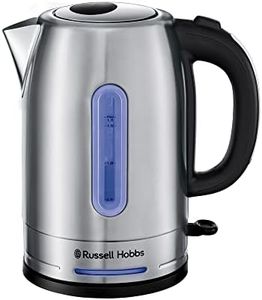
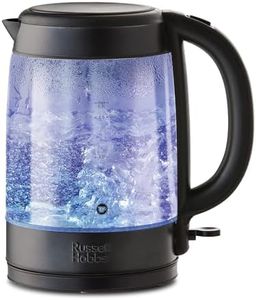
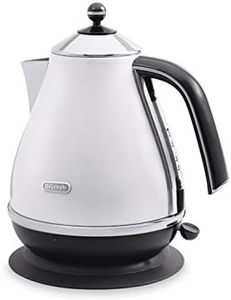
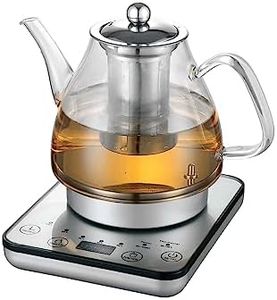

![Russell Hobbs Kettle Glass [1.7L, Temperature Setting 40-100°C] (Indoor Lighting, Soothing Sounds, Quiet Cooking Technology, Keep Warm Function, Display & Touch Control, 2400W) 27450-70](https://images-proxy.bestreviews.guide/Izy7fxBKSFSQT9xeMCr2tuGLWuk=/0x300/https://m.media-amazon.com/images/I/41M2XtQQKFL._AC_CX679_.jpg)

